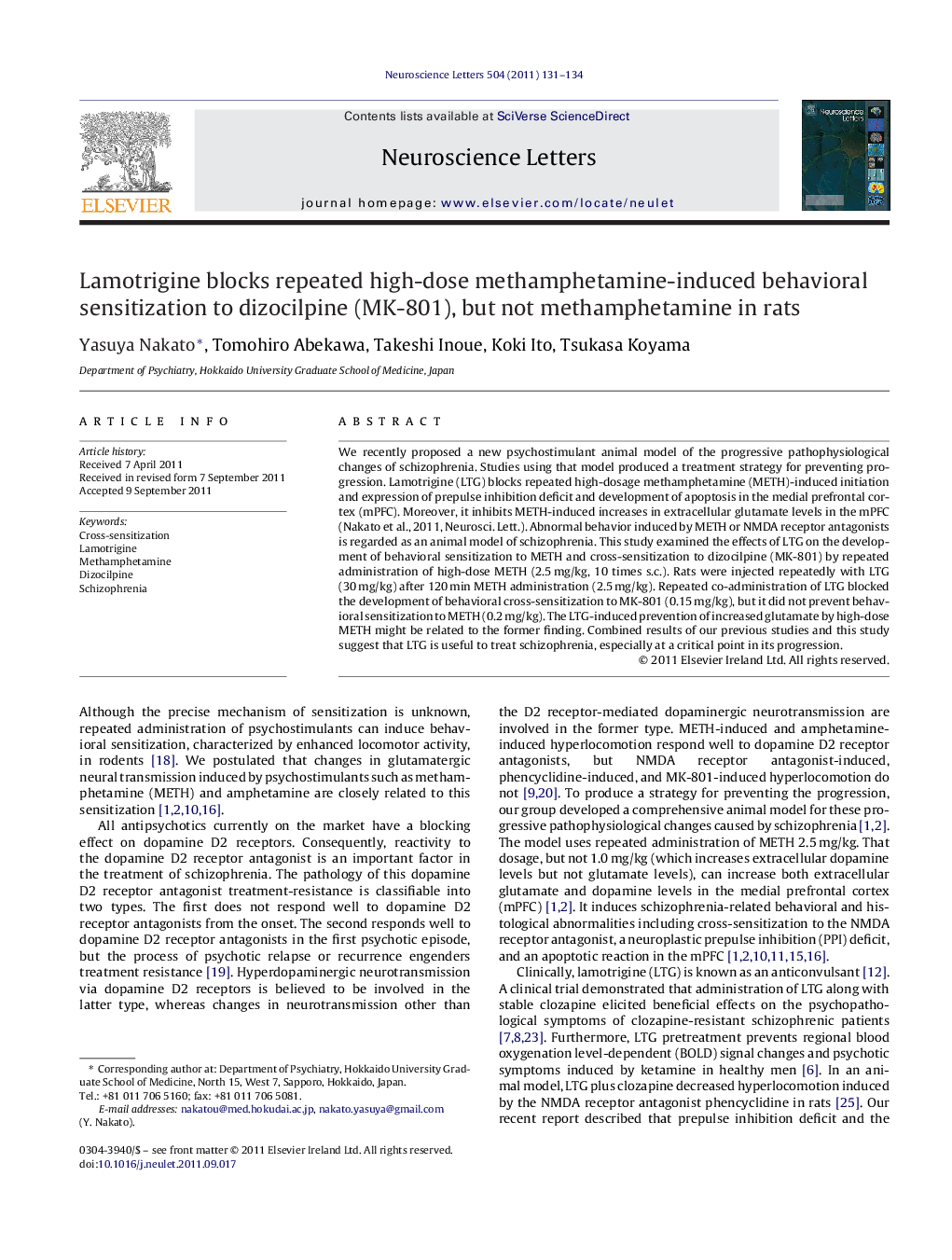| Article ID | Journal | Published Year | Pages | File Type |
|---|---|---|---|---|
| 4344858 | Neuroscience Letters | 2011 | 4 Pages |
We recently proposed a new psychostimulant animal model of the progressive pathophysiological changes of schizophrenia. Studies using that model produced a treatment strategy for preventing progression. Lamotrigine (LTG) blocks repeated high-dosage methamphetamine (METH)-induced initiation and expression of prepulse inhibition deficit and development of apoptosis in the medial prefrontal cortex (mPFC). Moreover, it inhibits METH-induced increases in extracellular glutamate levels in the mPFC (Nakato et al., 2011, Neurosci. Lett.). Abnormal behavior induced by METH or NMDA receptor antagonists is regarded as an animal model of schizophrenia. This study examined the effects of LTG on the development of behavioral sensitization to METH and cross-sensitization to dizocilpine (MK-801) by repeated administration of high-dose METH (2.5 mg/kg, 10 times s.c.). Rats were injected repeatedly with LTG (30 mg/kg) after 120 min METH administration (2.5 mg/kg). Repeated co-administration of LTG blocked the development of behavioral cross-sensitization to MK-801 (0.15 mg/kg), but it did not prevent behavioral sensitization to METH (0.2 mg/kg). The LTG-induced prevention of increased glutamate by high-dose METH might be related to the former finding. Combined results of our previous studies and this study suggest that LTG is useful to treat schizophrenia, especially at a critical point in its progression.
► Repeated administered methamphetamine (METH) induced sensitization to METH. ► Repeated administered METH induced cross-sensitization to MK-801. ► Repeated co-administration of lamotrigine blocked cross-sensitization to MK-801. ► Lamotrigine may be useful for preventing pathophysiological changes of schizophrenia.
